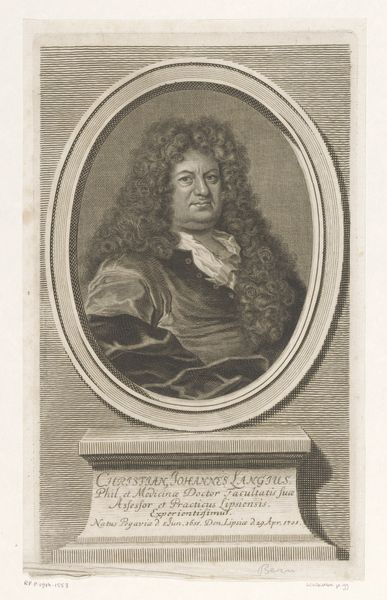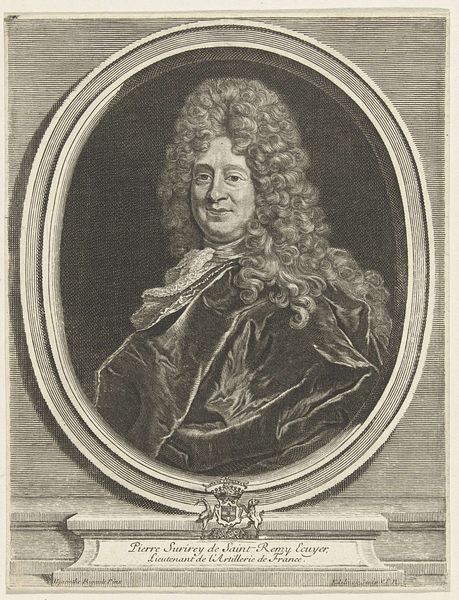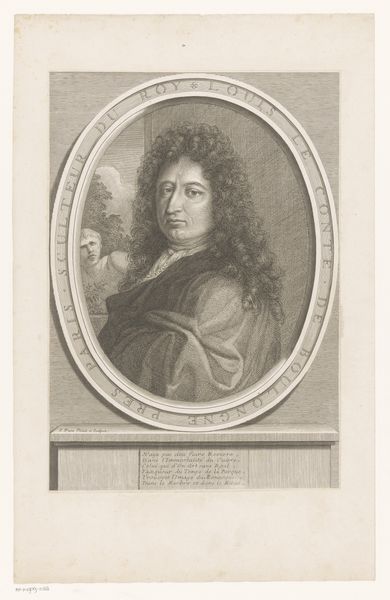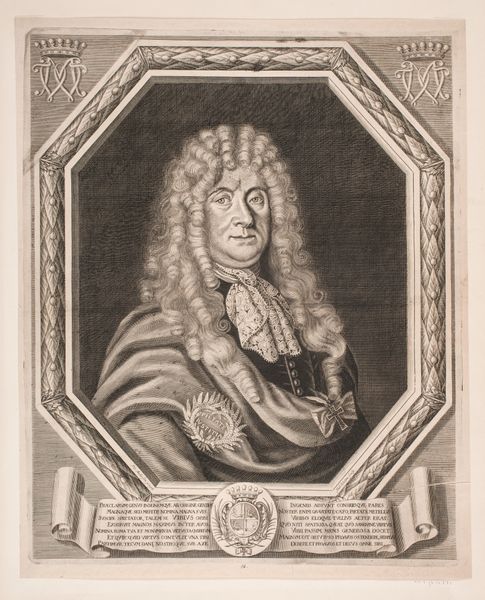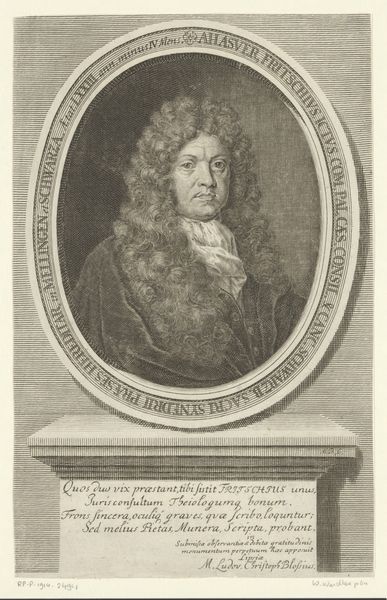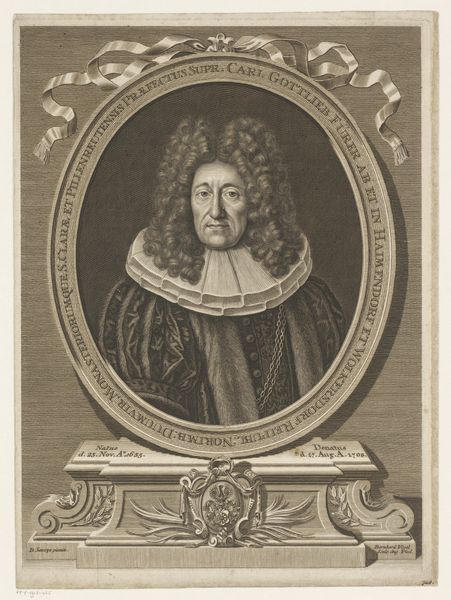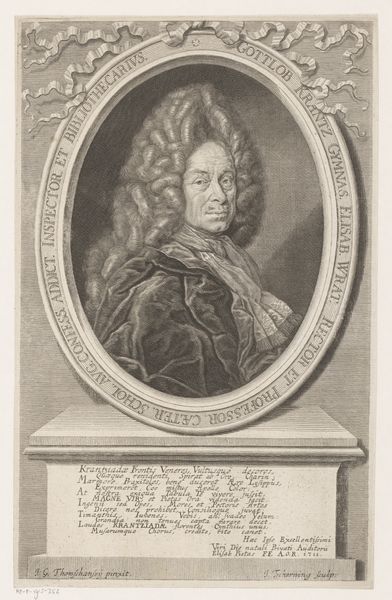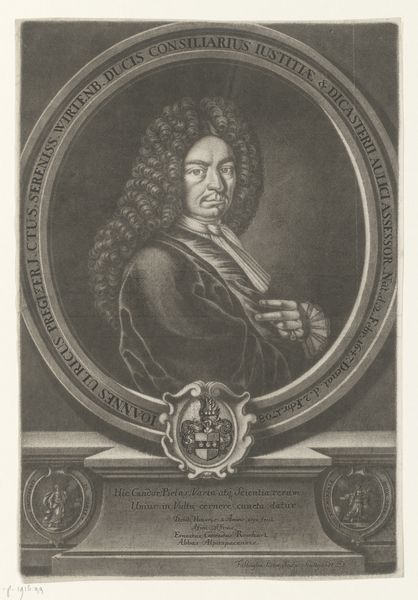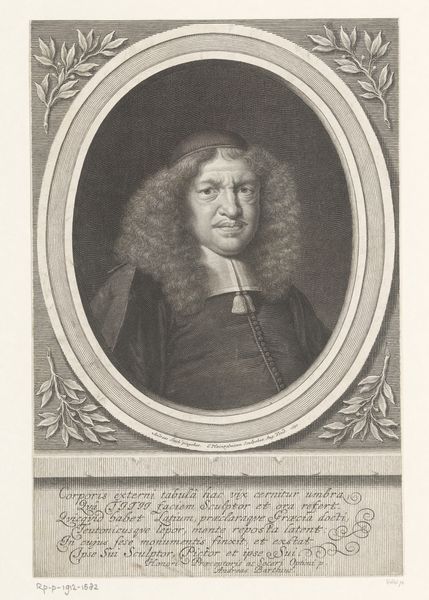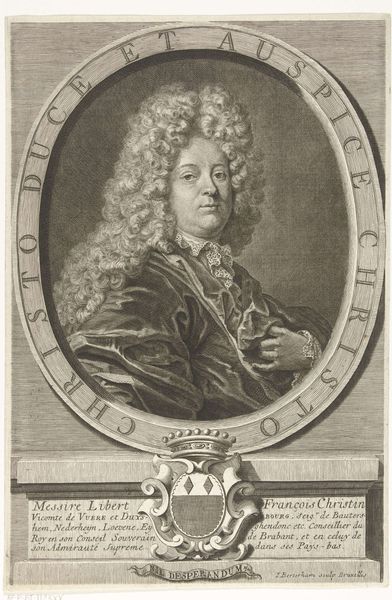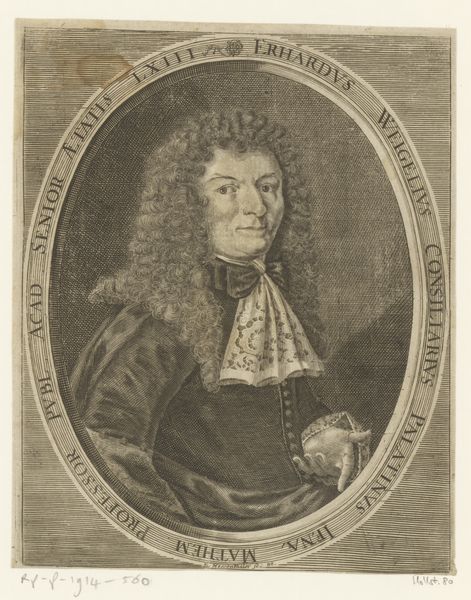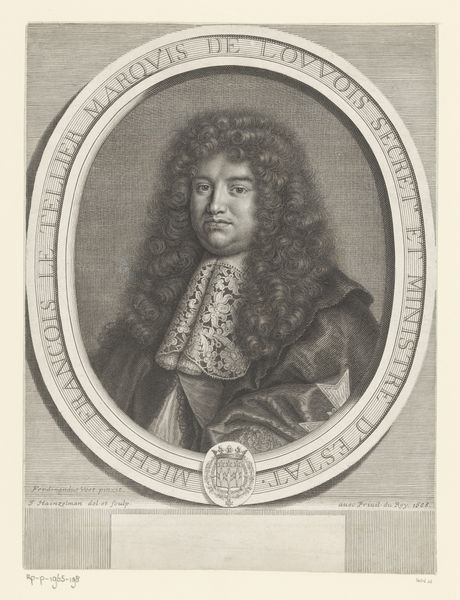
engraving
#
portrait
#
baroque
#
caricature
#
line
#
portrait drawing
#
academic-art
#
engraving
Dimensions: height 158 mm, width 98 mm
Copyright: Rijks Museum: Open Domain
Curator: Here we have a 1715 engraving entitled "Portret van Pierre Dionis," an intriguing portrait housed in the Rijksmuseum. Editor: My immediate impression is the controlled intensity—that gaze is incredibly direct, almost confrontational. Despite being an engraving, there's an air of immediacy. Curator: Precisely. The work depicts Pierre Dionis, a prominent French surgeon, rendered through fine lines characteristic of academic Baroque portraiture. Notice the elaborate oval frame and the ribbon at the top. How do those elements speak to the social role of this kind of image? Editor: The ornamentation signals status, power, and an intention to memorialize Dionis. In this period, engravings were crucial for disseminating images of important figures, thereby cementing their legacies. This isn't just art; it's a tool for shaping public perception. What is especially remarkable here is its circulation throughout Europe due to printmaking advances. Curator: Indeed. The semiotic density of such a portrait—the wig, the clothing, the framing elements—all coalesce to construct a specific narrative around the sitter. His confident and determined physiognomy reflects the essence of that time’s bourgeoisie, and one may further notice the academic tradition of detailed lines that create contrast of dark and light. The fine details create the very real three-dimensional quality on this piece. Editor: And we must remember the social context; a surgeon of Dionis' stature would have been closely associated with the royal court. This image promotes the intersection of science, power, and privilege. Was he also memorialized on a sculpture, or in books? That would certainly enhance his lasting legacy and help build credibility within that court sphere. Curator: That's an astute observation; the artwork acts almost as a promotional piece of the sitter through meticulous lines that frame the surgeon as part of something even more important. Editor: It becomes evident when discussing these Baroque period prints that the formal attributes and visual composition blend to produce far more than just surface details, especially when placed into sociohistorical context.
Comments
No comments
Be the first to comment and join the conversation on the ultimate creative platform.
